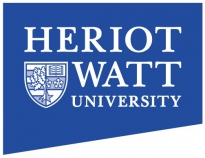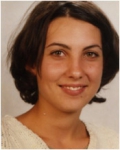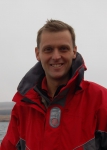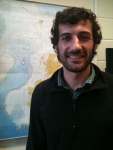Participant of COCARDE Network
Heriot Watt University
 Dr J. Murray Roberts‘ research group researches the biology and ecology of cold-water corals, particularly the reef framework-forming species that construct reefs and coral carbonate mounds. The work is frequently interdisciplinary involving strong collaborations with marine geologists, geochemists, engineers and oceanographers.
Dr J. Murray Roberts‘ research group researches the biology and ecology of cold-water corals, particularly the reef framework-forming species that construct reefs and coral carbonate mounds. The work is frequently interdisciplinary involving strong collaborations with marine geologists, geochemists, engineers and oceanographers.
Projects
- Trans-Atlantic Coral Ecosystem Study (TRACES): www.lophelia.org/traces
- EuroTRACES: www.esf.org/eurotraces
- Hotspot Ecosystem Research and Man's Impact On European Seas: www.eu-hermione.net
- Scottish Alliance for Geoscience, Environment & Society: www.sages.ac.uk
- Marine Alliance for Science & Technology Scotland: www.masts.ac.uk
- Deep-sea Conservation for the UK: www.deepseaconservation.org
- UK Ocean Acidification Research Programme: www.oceanacidification.org.uk
Facilities
People
|
Dr.
J. Murray Roberts
(email)
|
Dr.
Lea-Anne Henry
(email)
|
Dr.
Laura Wicks
(email)
|
|
Alessandro Icardi
(email)
|
 Melanie Douarin Melanie Douarin(email)
|
 Beatriz de Francisco Mora Beatriz de Francisco Mora(email)
|
Related Publications
Henry L-A, Davies AJ, Roberts JM (2010) Beta diversity of cold-water coral reef communities off western Scotland. Coral Reefs 29: 427-436
Gass SE, Roberts JM (2010) Growth and branching patterns of Lophelia pertusa (Scleractinia) from the North Sea. Journal of the Marine Biological Association of the UK. doi:10.1017/S002531541000055
Davies AJ, Duineveld G, Lavaleye M, Bergman M, van Haren H, Roberts JM (2009) Downwelling and deep-water bottom currents as food supply mechanisms to the cold-water coral Lophelia pertusa (Scleractinia) at the Mingulay Reef Complex. Limnology & Oceanography 54: 620-629
Dodds LA, Black KD, Orr H, Roberts JM (2009) Lipid biomarkers reveal geographical differences in food supply to the cold-water coral Lophelia pertusa (Scleractinia). Marine Ecology Progress Series 397: 113-124
Roberts JM, Davies AJ, Henry L-A, Duineveld GCA, Lavaleye MSS, Dodds LA, Maier C, van Soest RWM, Bergman MIN, Hühnerbach V, Huvenne V, Sinclair D, Watmough T, Long D, Green S, van Haren H (2009) Mingulay reef complex: an interdisciplinary study of cold-water coral habitat, hydrography and biodiversity. Marine Ecology Progress Series 397: 139-151
Roberts JM, Wheeler A, Freiwald A, Cairns SD (2009) Cold-water Corals: The Biology and Geology of Deep-sea Coral Habitats. Cambridge University Press, 334 pp



